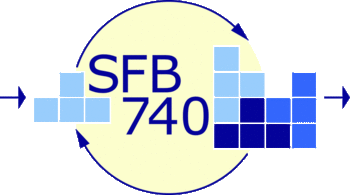SFB 740 | D7
Freie Universität Berlin
Fachbereich Mathematik und Informatik
German Research Foundation (DFG)
From Molecular Patterns to Transport in Specific Geometries: Spatial effects on the function of the phototransduction module
The function of cellular modules is commonly understood to be defined by the participating molecules (proteins, RNA, lipids, ions, co-factors) and their interactions (binding, aggregation, enzymatic reactions), which is summarized by a biochemical reaction network. This way of reasoning has also dominated classical systems in biology, where biochemical events are modeled by concentration changes in well-stirred containers. Here we propose that in many, perhaps in most biochemical modules the spatial aspects are of equal importance and must not be neglected: This ranges from the formation of local molecular patterns in membranes, over molecular sorting and location, active or passive transport processes through pre-arranged regions or along fibers or pathways, up to the restrictions of diffusional motion imposed by the specific cellular geometry.
The prime example for a module with a specific and interesting geometry is the rod cell phototransduction module. Biochemically, it is one of the best-understood functional modules, as most of the relevant molecules and their interactions are known. It has been suggested that the activation submodule may be influenced by molecular pattern formation on the disc membranes, and also that diffusion processes taking place in the specific layered geometry of the outer cell segment play a key role in determining global functional properties such as the uniformity of the single-photon response. Nevertheless, the dominant part of the literature seeks to understand this and other modules primarily in terms of the molecular interactions and with potentially too little account of the specific spatial embedding.
In this project we will combine detailed molecular dynamics simulations of molecular pattern formation in disk membrane segments with explicitly spacetime resolved particle simulations of the entire rod outer segment with about 105 particles that are involved in the phototransduction module per cell. Based on these simulations we will explore the relative importance of the spatial aspects in determining modular function, and how local spatial features such as pattern formation between neighboring molecules propagate to transport and functional aspects of entire submodules or modules. Our studies will be carried out in close collaboration with experimental partners in the SFB.

